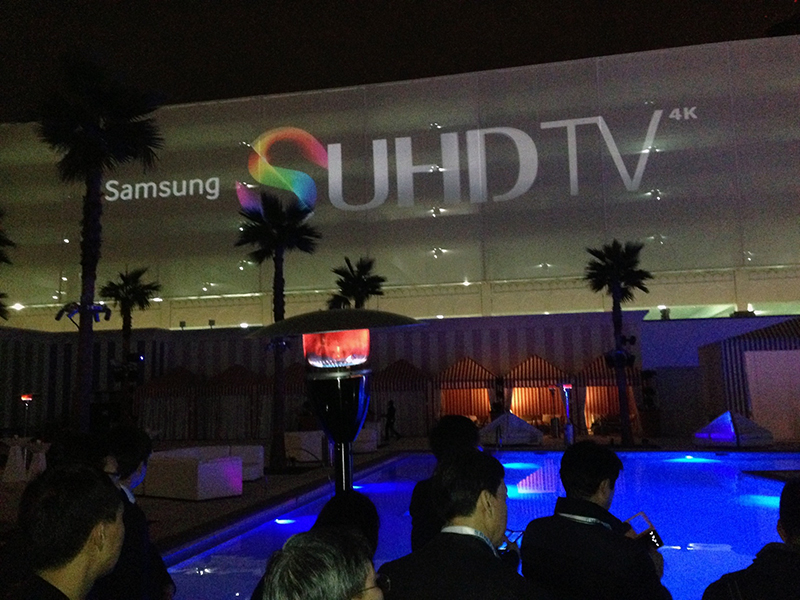
The early news out of CES (The International Consumer Electronics Show) in Las Vegas this week is that the world's major smart television makers are convinced that 4K Ultra HDTV (UHDTV) is the future for their industry, that bigger (and curved) screens are better, and that they need to move quickly to make the user interface mesh with other connected devices, especially smartphones.
In an early preview for the media last night (which was embargoed for release until their press conference at 2 p.m. PST today), Samsung executives revealed their SUHD TV (with the "S" standing for spectacular, smart, stylish and superb) using their quantum dot technology. "This TV will deliver a whole new viewing experience," said HS Kim, Samsung's executive vice president of their visual display business, during the preview yesterday evening.
The company also announced a 105" bendable SUHD TV that continues the company's intent to capture their share of the curved television screen market while attracting more customers to the ultra HD world. "Nearly half of the UHD TVs we sell are curved," said Dave Das, senior vice president of Samsung's home entertainment division.

Curved TV sales are expected to increase only marginally in 2015, based on data released yesterday by the Consumer Electronics Association (CEA), moving from 1 million sets to 3.4 million in a year's time. Despite the slow growth, both LG and Haier also announced new curved screen models. LG is promoting a curved 77" OLED TV, and Haier is releasing its own 105" and 55" models.
A significant announcement from Samsung, and several other TV makers today, does not involve hardware at all. The TVs which Samsung is showcasing at CES throughout this week will, for the first time, include the company's Tizen operating system. This software will connect Samsung TVs with the company's smartphones and allow users to browse and discover content using their other devices.
"This technology is as artful as it is innovative," said Das.
Samsung's competitors are moving quickly to capture "smarter" connectivity for their own TVs as well. Earlier today, LG announced an expanded OLED TV lineup, with seven new 4K UHD models. And all will now be powered by webOS 2.0, LG's offering to consumers for a more customized experience and enhanced user interface.
And Sharp, in their announcement today, will now have Android TV built-in for the company's 4K UHD models. This sets up an interesting competition between Samsung's own Tizen operating system for their TVs and Google's Android, the platform that has powered Samsung's smartphones for many years.
Sharp also announced today a super slim 4K UHD TV that approximates the width of a smartphone or tablet, and an 80 inch "Beyond 4K" set with millions more subpixels that company executives claim will "begin to approach 8K resolution."
Today's news out of Las Vegas shows that the world's major television manufacturers are not content to merely bend, enlarge, or improve the picture quality of their screens. They now want their TVs to be smarter and better connected as well.















